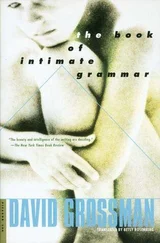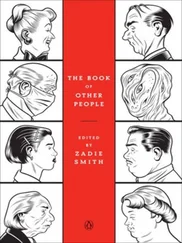4. (HELEN) BEATRIX POTTER (1866–1943), British author and illustrator
A shy and repressed little girl, Beatrix Potter turned to animals for companionship. Secreted in her nursery was a menagerie of rabbits, mice, frogs, snails — even bats and a tame hedgehog. Years later many of her most popular animal characters — Peter Rabbit, Squirrel Nutkin, Jemima Puddle-Duck and Jeremy Fisher — became playing pieces on a board game, ‘Peter Rabbit’s Race Game’, marketed in 1920. To play: choose a character, then roll a die and advance on a path of 122 squares (each player had a separate path) towards the winning goal, ‘The Meeting Place in the Wood’. Just one of the obstacles waiting to impede Squirrel Nutkin: ‘Nutkin meets his friends and loses a turn while talking’. But there were chances to jump ahead: Square 96 said, ‘Old Mr Brown suddenly bites off Nutkin’s tail and in terror he bounds off to 98’.
5. H.G. WELLS (1866–1946), British novelist and historian
Wells’ book/game Little Wars (1913) had simple rules but required an elaborate battleground. Players made houses, churches, castles and sheds by gluing together wallpaper, cardboard and corrugated packing paper; the structures (some over 1 ft high) were handsomely painted to show various details, such as windows and rainwater pipes. H. G. liked to play on an 18-ft battlefield with 200 soldiers and 6 brass cannon (that could fire 1-in. wooden cylinders 9 yards) per side. Playing the game was a serious event for Wells, a boisterous, red-faced commander always ready to rally his troops to anticipated victory. As one friend commented: ‘I have seen harmless guests entering for tea, greeted with the injunction, “Sit down and keep your mouth shut”… it was a game which began at 10 and only ended at 7:30, in which Wells had illegitimately pressed noncombatants into his army — firemen, cooks, shopkeepers and the like — and in which a magnificent shot from the other end of the floor destroyed a missionary fleeing on a dromedary — the last representation of a nation which had marched so gaily into battle so many hours before.’
– C.O.M.
JAMES LANDALE’S 8 REMARKABLE PISTOL DUELS
James Landale is an experienced journalist who currently works as a political correspondent for the BBC. Before joining the corporation in January 2003, he spent ten years working for The Times, most recently as Assistant Foreign Editor. He also served as the paper’s Political Correspondent and Brussels Correspondent. In 2000/2001 James sailed from the UK to Hawaii in a round-the-world yacht-race sponsored by The Times, his weekly dispatches vividly describing the realities of life at sea. When he is not reporting or writing, he is most likely to be sailing. He lives with his wife, Cath, and daughter, Ellen, in Barnes, southwest London.
James knows all about duels because one of his ancestors took part in one. David Landale shot dead his bank manager in 1826 in Scotland’s last fatal pistol duel. James tells the story of this extraordinary encounter in his first book, Duel — A True Story of Death and Honour , to be published by Canongate in 2005.
A LONG DUEL
Two officers in Napoleon’s army spent 19 years carving each other up in a series of duels that were always bloody but never lethal. Their dispute began in 1794 when Captain Dupont was ordered to stop Captain Fournier attending a party. Fournier took umbrage, challenged Dupont and they fought the first of 17 duels. As the years passed, they drew up a contract. If they came within 100 miles of each other, they would fight, military duty alone excusing a duel. Such was their companionship in honour that on occasion they dined together before fighting. In the end, by 1813, General Dupont tired of fighting General Fournier. He also wished to marry. So he arranged an unusual duel in which they stalked one another in a forest, armed with two pistols. Dupont stuck his coat on a stick and tricked his opponent into firing twice. Dupont spared Fournier’s life but told him that if ever they duelled again, he reserved the right to fire two bullets first from a few yards’ range. They never fought again. The story formed the basis of Joseph Conrad’s story, The Duel , and Ridley Scott’s 1979 film, The Duellists .
A PRIME MINISTERIAL DUEL — 1
In 1798, at a crucial moment in Britain’s struggle against Napoleon, the Prime Minister, William Pitt the Younger, chose to risk his life in a seemingly absurd duel. The 39-year-old premier had been criticised in the House of Commons by a hot-headed but insignificant Irish MP. George Tierney had condemned Pitt’s plans to beef up the Navy to counter the threat of invasion from France. Pitt was furious, called Tierney a traitor and challenged him to a duel. They fought at three in the afternoon on Putney Heath in southwest London. Pitt’s friend, Henry Addington, the Speaker of the British Parliament, chose to attend as a witness. At 12 paces both men fired twice and, fortunately, missed twice. Some have hinted that the seconds deliberately loaded insufficient gunpowder to avoid a fatal injury. Pitt went on to lead the war effort against Napoleon and introduce income tax to Britain for the first time.
A NUDE DUEL
A Member of Parliament once duelled in the nude. Humphrey Howarth, the MP for Evesham, was attending the races at Brighton in 1806 and dined one night at the Castle Inn. There he fell into discussion with the Earl of Barrymore, an Irish peer. Discussion turned into quarrel and they arranged to meet on the race course early next morning. Both men were rogues, and much given to taking the piss. But even Barrymore was astonished as his opponent took his clothes off and presented himself on the duelling ground armed solely with pistol and pants. The seconds and other witnesses burst out laughing, not least because Howarth was by then a fat old man. But Howarth was in earnest. He had spent much of his earlier life as an army surgeon for the East India Company. He knew gunshot wounds were often infected by the dirty clothing that preceded a bullet into flesh. In the end, however, his precaution was redundant. Both he and his opponent missed their targets and resolved their dispute without bloodshed.
A PRIME MINISTERIAL DUEL — 2
The Duke of Wellington disapproved of duelling. He believed it fostered indiscipline and wasted good officers. But that did not stop the conqueror of Napoleon indulging in a little combat himself. Nor did the fact that he was 61 years old and Prime Minister put him off either. More than a decade after Waterloo, following several years of political uncertainty, George IV had turned to the aging war hero to re-establish a little order in the Tory party and the country. One of Wellington’s first acts was to give Britain’s Catholics a greater role in public life in an attempt to avoid unrest in Ireland. The policy divided the Tory party and one peer, the Earl of Winchilsea, a hardline Protestant, questioned Wellington’s motives. Letters passed and so, on March 21, 1829, both peers met on Battersea Fields at dawn. Winchilsea, realising by then that he was on a hiding to nothing, refused to point his pistol at Wellington and fired in the air. Wellington fired deliberately wide as well and accepted a written apology. The public were not impressed at their Prime Minister’s willingness to risk life and limb for such a trivial matter and Wellington found himself openly mocked in the press.
A SHORT DUEL
Jeffrey Hudson, a dwarf, entered royal service by emerging from a large pie at a party for Charles I. He belonged to the Duke of Buckingham. But Charles’s 15-year-old queen, Henrietta Maria, was so enchanted by the little man that she insisted he join the court. She called him Lord Minimus. Charles made him a captain in the Royal Army. But while Hudson was naturally the butt of many jokes, he was also a proud man. One day a young officer called Charles Crofts went too far and teased him for coming off worst in a fight with a turkey cock. For Hudson, this was too much and he challenged Crofts to a duel. The soldier thought he was joking and turned up armed with a water pistol. But Hudson was in earnest and demanded a real duel with real pistols on horseback. This was a shrewd move, for Crofts was fat and slow on a horse. Hudson, however, only 18 inches tall, presented a much tougher moving target. Thus the dwarf escaped injury while his opponent was dead through the heart. This was the last of Hudson’s luck. He incurred royal disfavour, was exiled, captured by Barbary pirates and spent the next 25 years in prison in North Africa. In the end, he escaped and retired to his native Rutland, where they still drink a beer named in his honour.
Читать дальше












